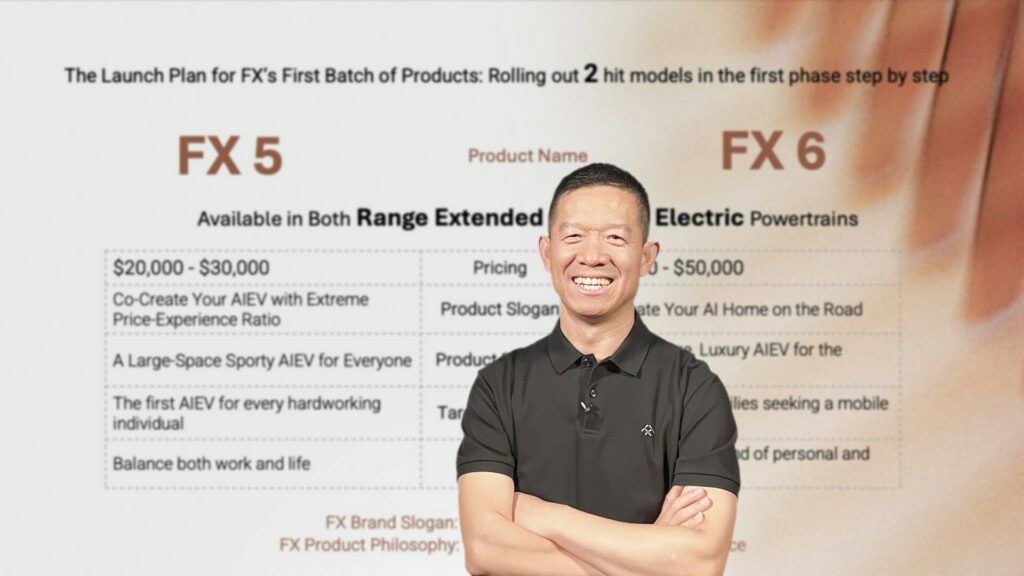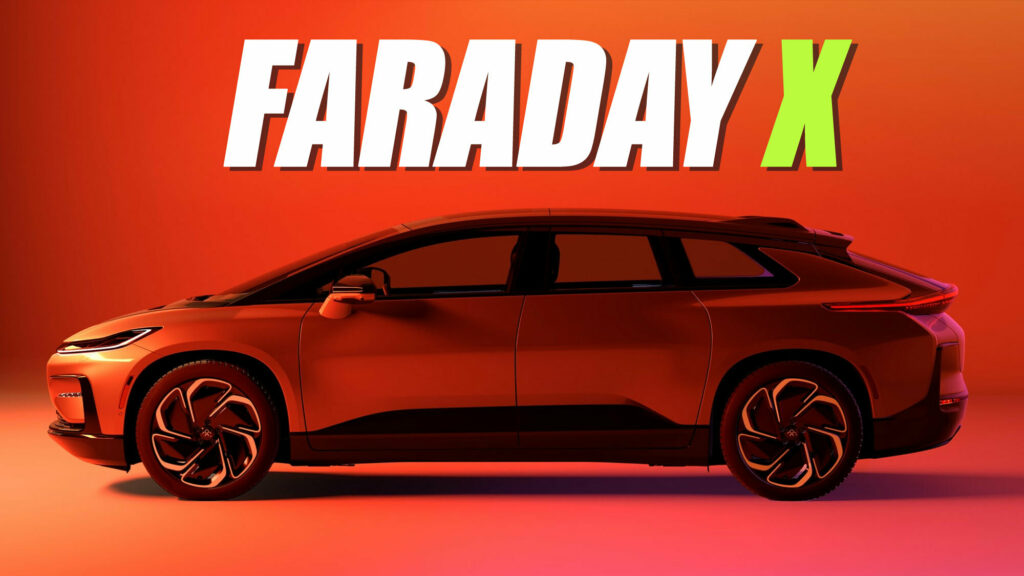- Faraday Future announced the new Faraday X (FX) brand, targeting the mainstream market.
- FX aims to offer electric and range-extended vehicles priced between $20,000 and $50,000.
- Production is planned for next year, but it depends on securing funding and finalizing details.
Faraday Future’s failures are well-known, but that hasn’t stopped the company from announcing plans for a new mainstream brand. Called Faraday X (FX), it aims to become the “Toyota of the AIEV [Artificial Intelligence Electric Vehicle] era.”
Obligatory eye roll aside, the company announced plans for two models called the FX 5 and FX 6. The former is “expected” to cost between $20,000 and $30,000 while the latter should have prices between $30,000 and $50,000. Both are slated to be offered with electric and range-extended powertrains.
More: Faraday Future Celebrates First EV Deliveries With $309,000 Limited Edition FF 91 2.0
While Faraday wants to begin production by the end of 2025, it’s all “subject to securing necessary funding.” However, given the dismal sales of the FF 91 and its tortured development, this feels like a long shot. Nevertheless, the company has “established relationships with four Chinese OEMs, having already entered into two strategic framework agreements and two memoranda of understanding, and is working toward finalizing definitive agreements with each to fully promote Range Extended AIEV in the U.S.”
Faraday Future didn’t say much of substance, but they billed the FX 5 as a “large-space sporty AIEV” and said it’s for “every hardworking person, helping them balance both work and life.” The FX 6, on the other hand, is an “extra-large, Luxury AIEV for Family.”
While you might not want to get your hopes up, the company announced plans for an FX logo design competition in the future and said they’ll survey fans about changing their stock symbol from FFIE to FFAI. On that note, the company’s short press release mentioned AI more than 50 times and investors apparently aren’t buying the buzzwords as the stock is down more than 8% as of this writing.





